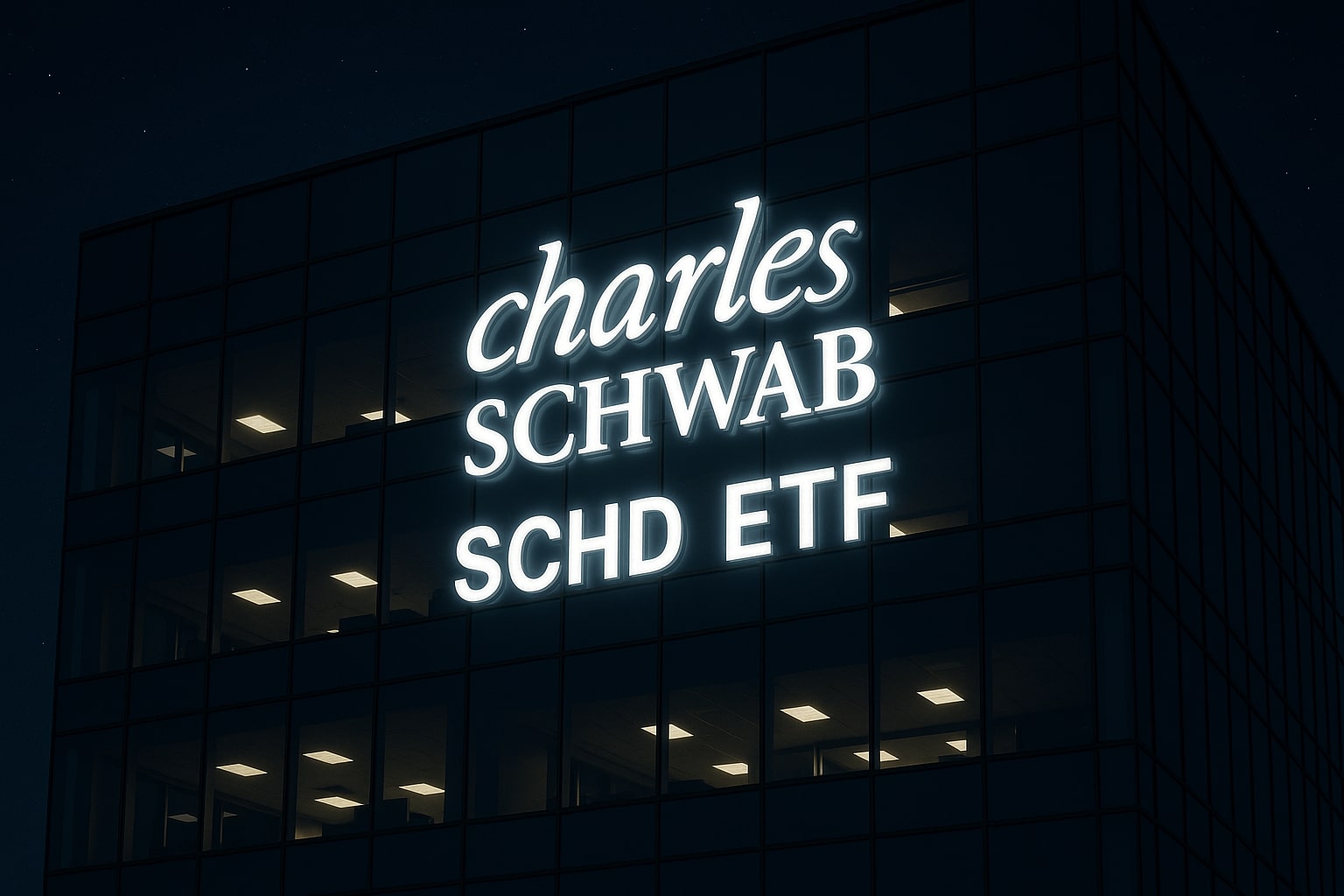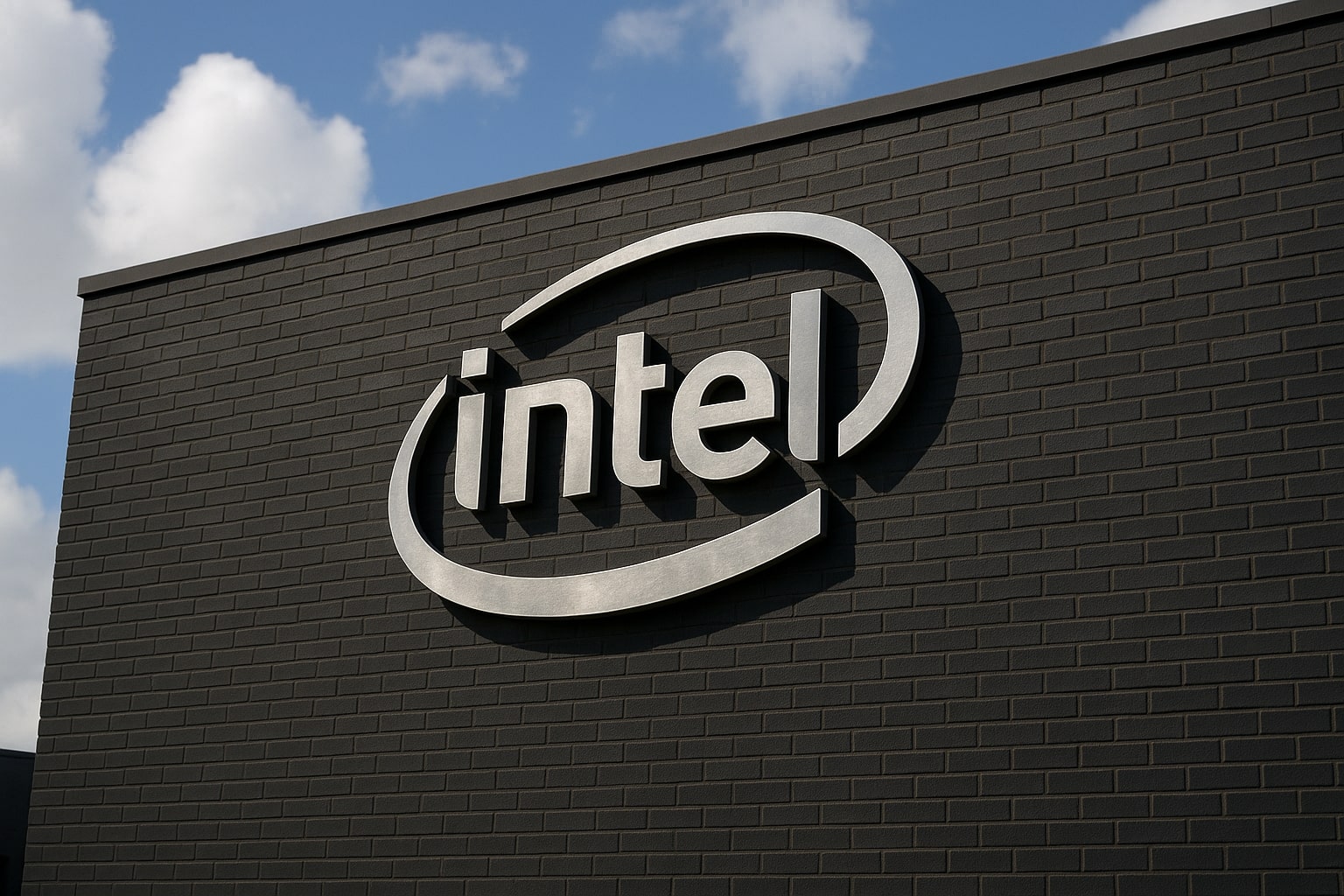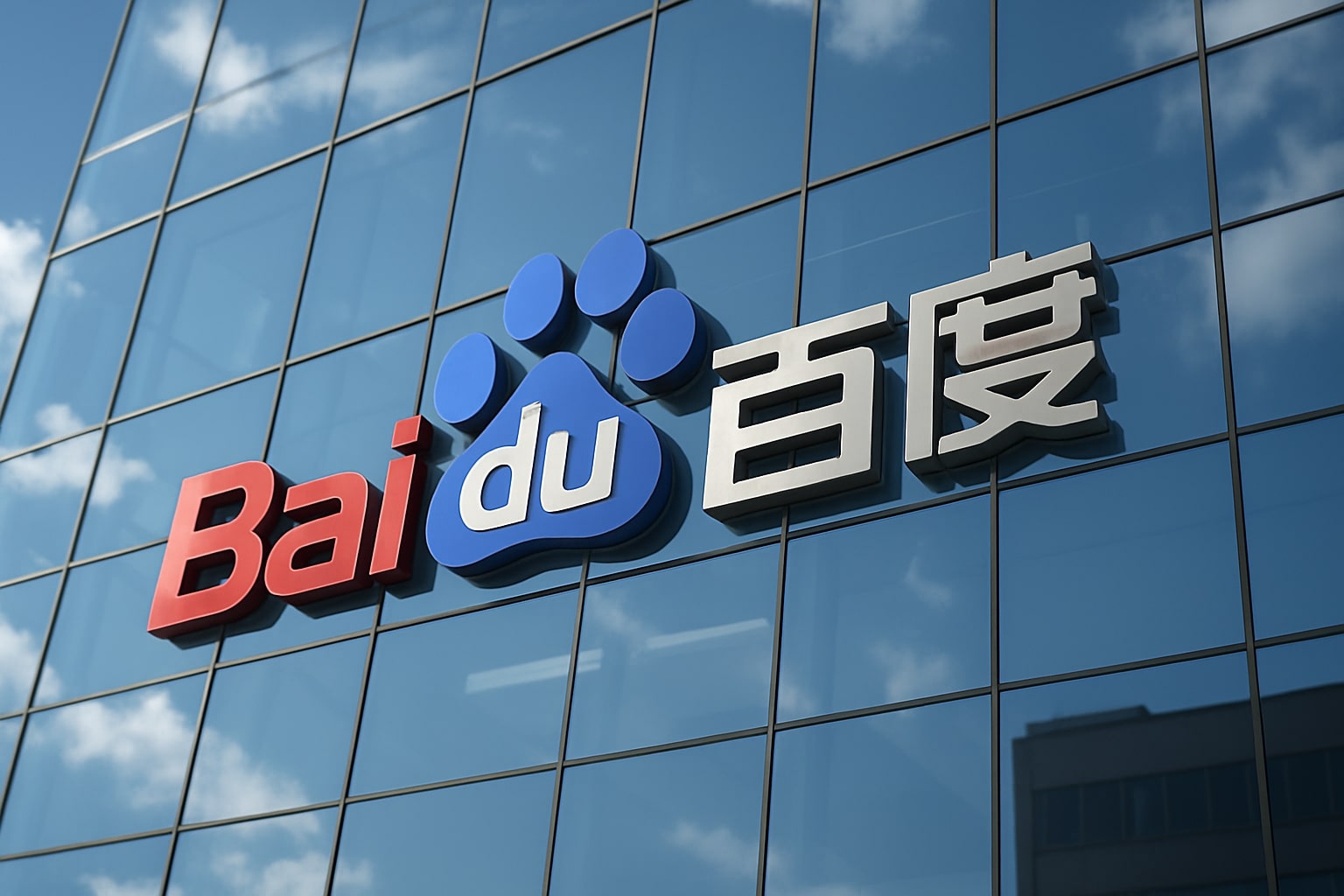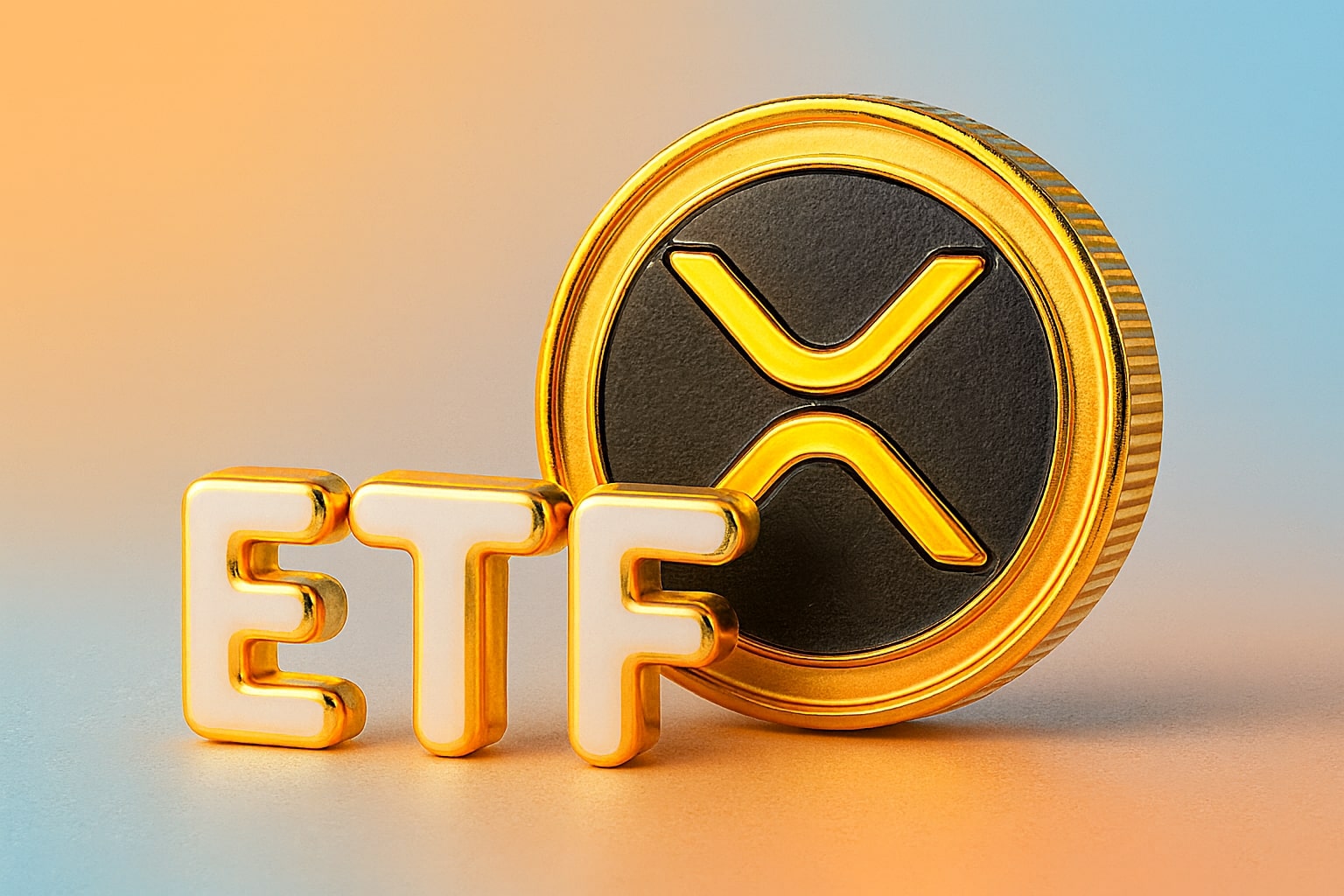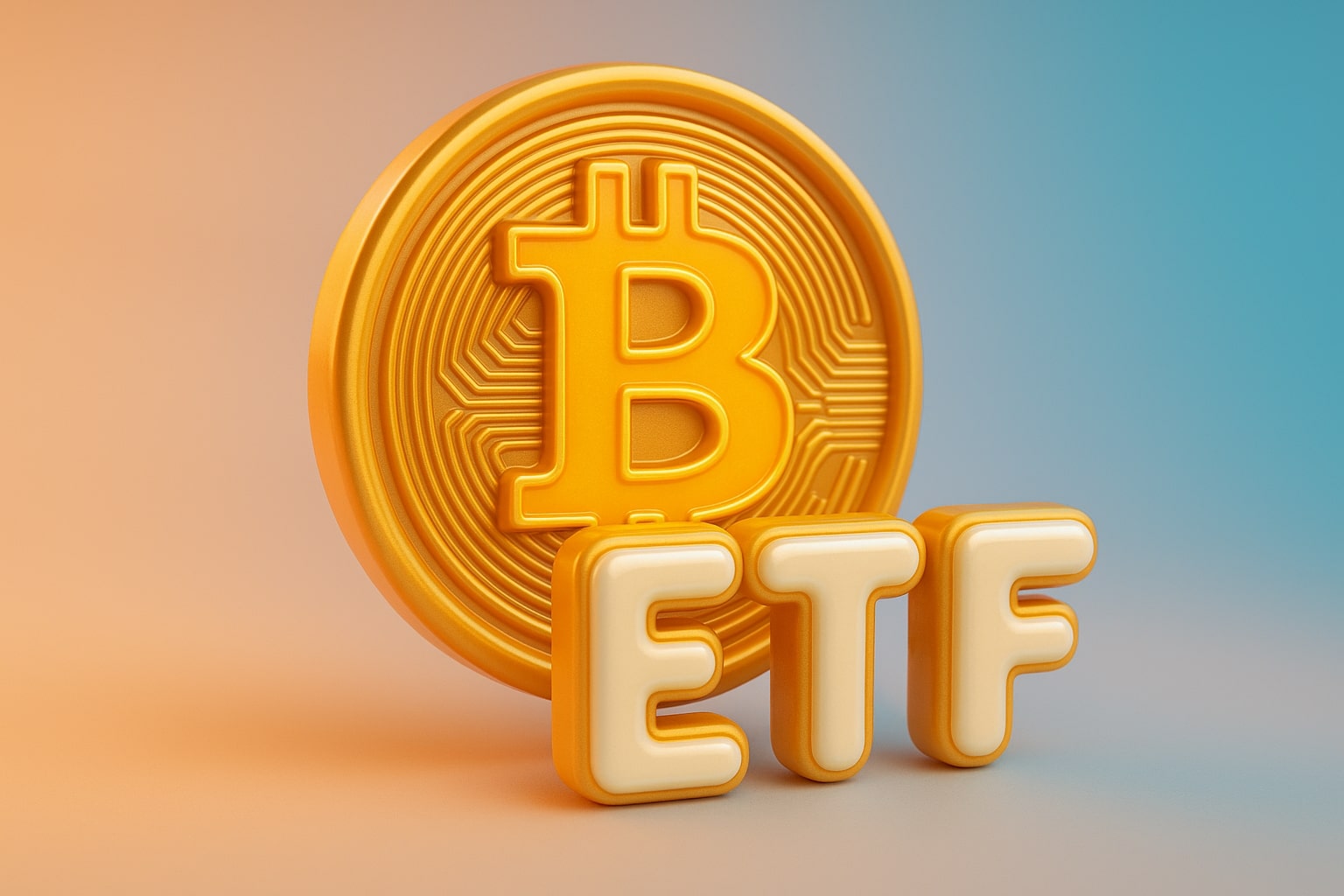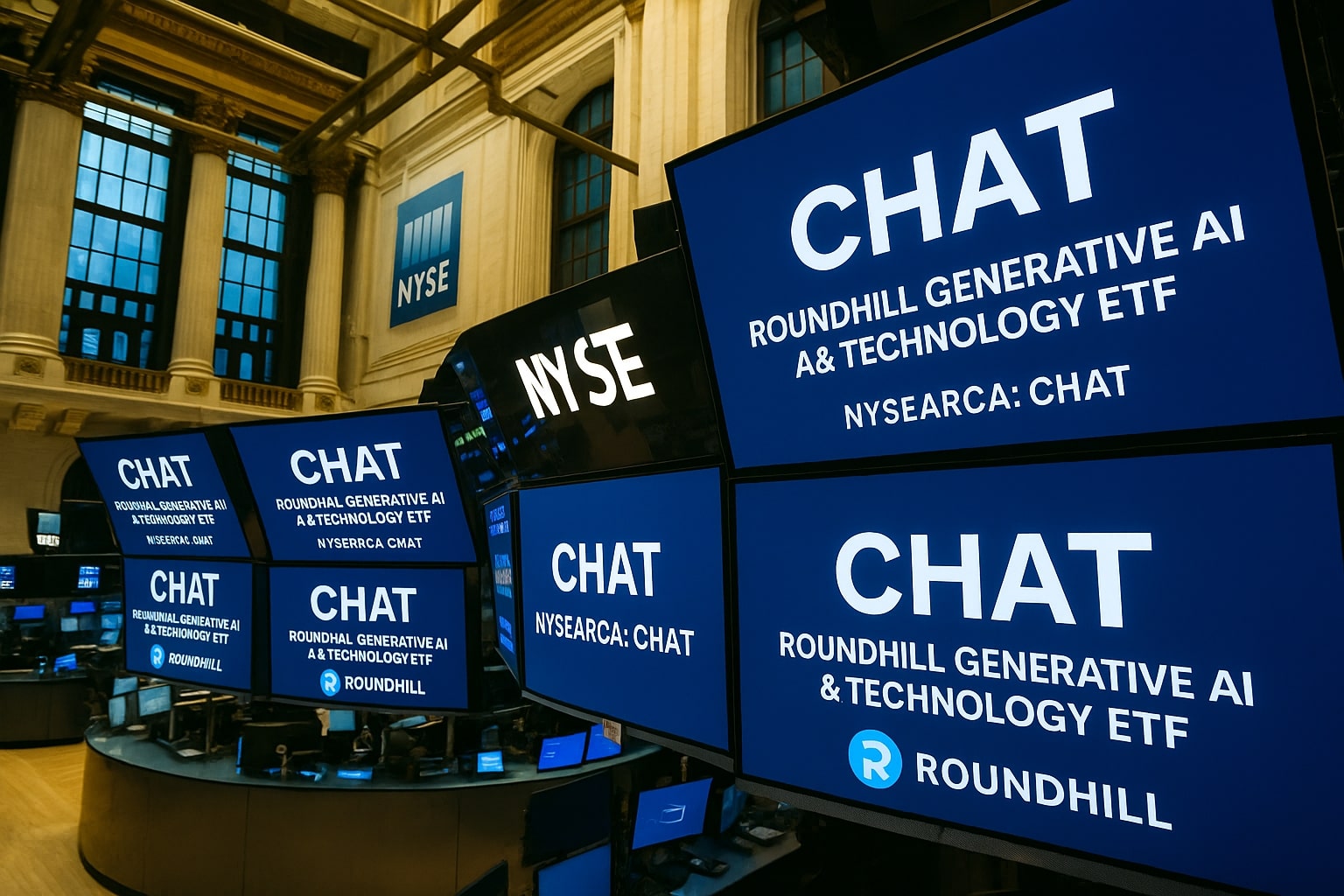
NYSEARCA:CHAT ETF Climbs 49.9%, Targets $91.82 Amid AI CapEx Wave
From $28.96 lows to $53.17, CHAT outpaces peers as Nvidia, Microsoft, and Meta fuel the AI supercycle | That's TradingNEWS
NYSEARCA:CHAT ETF – Riding the AI Supercycle With High Risk, High Reward
The Roundhill Generative AI & Technology ETF (NYSEARCA:CHAT) closed at $53.17 on September 3, 2025, slightly above its NAV of $52.95, after gaining +30.85% YTD and nearly +49.9% over the past 12 months. This performance has outpaced nearly every peer in the thematic AI space, including Global X AI & Technology ETF (AIQ) at +27.7% and iShares Future AI & Tech ETF (ARTY) at +27.6%, and even doubled the total return of Invesco QQQ Trust (QQQ) at +20.4%. Such numbers reinforce CHAT’s positioning as the most aggressive pure-play AI infrastructure ETF in the market today.
Fund Structure, Holdings, and Concentration Risks
The ETF maintains $411.3 million in net assets and holds 35 companies, with its top 10 names representing 43.9% of assets. NVIDIA (NVDA) leads the basket at 8.53%, followed by Alphabet (GOOGL) 4.67%, Astera Labs (ALAB) 4.36%, Palantir (PLTR) 4.21%, and Arista Networks (ANET) 4.08%. Additional weight lies in Oracle (ORCL) 4.07%, Microsoft (MSFT) 3.79%, Alibaba (9988.HK) 3.42%, Meta (META) 3.41%, and Tencent (0700.HK) 3.40%. Collectively, tech makes up 72.55% of the fund, with communication services at 21.51%, making this one of the most sector-concentrated ETFs in the market.
The fund is actively managed, charges a 0.75% expense ratio, and shows a 92% portfolio turnover, signaling a trading-heavy strategy. That turnover, combined with the high fee structure, increases reliance on fund inflows to sustain performance. CHAT’s average daily volume of 175,611 shares and liquidity at $8 million daily trading value remain well above thematic ETF averages, reinforcing its appeal to institutional allocators.
AI Infrastructure Boom and CapEx Tailwinds
The investment thesis around NYSEARCA:CHAT centers on the multi-trillion-dollar CapEx cycle in AI infrastructure. Nvidia’s CEO Jensen Huang has projected $3–$4 trillion in AI infrastructure spending by 2030, as next-generation models demand 100x to 1000x more computation than existing AI chatbots. Microsoft’s multi-gigawatt data centers, Alphabet’s TPU expansion, and Oracle’s AI-centric databases all form part of this infrastructure wave, translating into direct revenue growth for CHAT’s core holdings.
Microsoft has already guided Azure revenue above $75 billion annually, while Oracle lifted FY2026 guidance to $67 billion (+16% YoY), citing enterprise adoption of AI workloads. Alphabet’s systems processed 980 trillion tokens monthly, doubling sequentially, while Meta has begun deploying multi-gigawatt clusters codenamed Prometheus and Hyperion for AI superintelligence research. Each of these numbers underscores that the AI buildout is not conceptual, but actively scaling at record-breaking speed.
Read More
-
SCHD ETF Price at $27: Can SCHD’s 4% Yield and 9.15% Dividend Growth Beat High-Yield Covered Call ETFs?
15.12.2025 · TradingNEWS ArchiveStocks
-
XRP ETFs Close on $1B Inflows as XRPI at $10.92 and XRPR at $15.52 Hit 52-Week Lows
15.12.2025 · TradingNEWS ArchiveCrypto
-
Natural Gas Price Forecast: NG=F Holds the $4 Floor as Oversupply Clashes with 2026 LNG Demand
15.12.2025 · TradingNEWS ArchiveCommodities
-
USD/JPY Price Forecast - Dollar to Yen At 155: Yen Strength Builds As BoJ Hike And NFP Collide
15.12.2025 · TradingNEWS ArchiveForex
Fund Inflows and Price Momentum
CHAT’s AUM rose $346 million in the past year, with both underlying stock gains and net inflows driving growth. May to August 2025 marked its strongest period, as large fund inflows mirrored its peak 56% total return surge. Such synchronized performance and inflow cycles create a self-reinforcing rally—new investor money pushes holdings higher, which in turn attracts more capital.
Technically, CHAT trades in a strong uptrend. Current support sits at $42.71 (0.5 Fibonacci retracement), with long-term buyers expected between $34.5 and $35.5. At $53.17, CHAT has broken out of its channel and is targeting a short-term resistance at $68.60 (0.618 extension), with a long-term profit-taking level at $91.82 (1.618 golden ratio extension) by Q1 2026.
Global Diversification and Agentic AI Catalyst
While dominated by U.S. exposure (66.6% of portfolio), CHAT diversifies with 14% allocation to Chinese tech like Tencent and Alibaba, plus positions in TSMC (TSM), Samsung, and SK Hynix. This global basket allows exposure to both U.S. hyperscalers and Asian semiconductor supply chains.
Beyond current AI adoption, CHAT is uniquely positioned to benefit from Agentic AI—the next phase where AI systems conduct multi-step autonomous reasoning. Meta and Microsoft are already deploying advanced models targeting superintelligence, while Palantir continues to expand government and enterprise contracts for agent-based AI solutions. If the market transitions to this phase by 2026–2027, CHAT’s holdings could enter a fresh cycle of accelerated revenue growth.
Risks: Concentration, Fees, and Energy Bottlenecks
The largest risks are structural. CHAT’s concentration in semiconductors and software (63.1% combined) exposes it to sector-specific downturns. Any disruption at TSMC, which manufactures chips for Nvidia, AMD, and Apple, would ripple through CHAT’s top holdings. Regulatory risks around AI development, export controls on semiconductors, or a slowdown in CapEx spending could trigger sharp declines.
Equally important, the energy grid constraint looms as a physical bottleneck. With AI demand expected to strain global electricity capacity, power shortages could derail projected AI infrastructure growth. BlackRock has already flagged this as one of the largest risks to the scalability of generative AI.
Internally, CHAT’s 0.75% fee and 92% turnover create performance drag. Financial statements show that for the year ending April 2025, the ETF posted -$1.27 million in net operating results, with growth entirely dependent on ~$100 million in fresh inflows. This reliance on new capital makes CHAT vulnerable if sentiment shifts and outflows accelerate.














